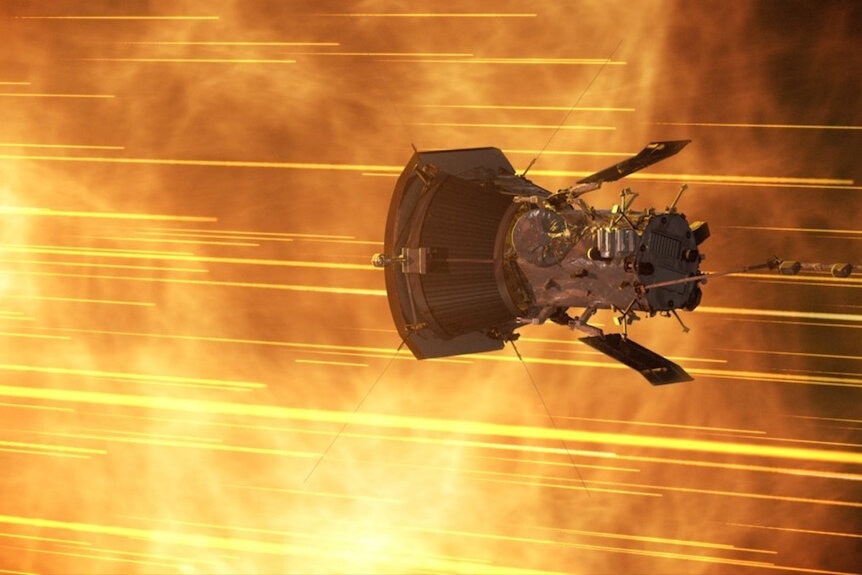Create a free profile to get unlimited access to exclusive videos, sweepstakes, and more!
The Parker Solar Probe Sets New Record for Fastest Spacecraft
Fast enough to cross the Atlantic in half a minute.
Visiting a world around another star is the holy grail of space exploration, but the fantastically long transit distances are prohibitive. If we want to get to the star next door, like the crew of The Ark (streaming now on Peacock), in any reasonable amount of time, we’d need to be traveling incredibly fast.
At present, even our fastest spacecrafts crawl at a snail’s pace when compared to the incredible distances at play in space. We’re nowhere near being able to fly fast enough to visit our cosmic neighbors, but NASA’s Parker Solar Probe is pushing the boundary and breaking space speed records.
NASA’s Parker Solar Probe Breaks Space Speed Record… Again!
The Parker Solar Probe launched in 2018 and has been rapidly spiraling around the Sun ever since. The space probe’s aim is to study the Sun close up during the first half of solar cycle 25, leading up to solar maximum in 2025. The information it sends home has informed and will continue to inform solar astronomy, solar weather prediction, and strategies for protecting against intense solar storms.
RELATED: Welcome Solar Cycle 25! A New Solar Magnetic Cycle Has Begun
Getting Parker off Earth and into orbit required powerful rockets, but getting it into its high speed position around the Sun relies on the careful use of physics. As Parker whips around the inner solar system, it makes close passes of Venus and uses the planet’s gravity to bend its trajectory, pushing it closer to the Sun and at higher speed. On August 21, the probe completed a close pass by Venus which pushed the probe closer to the Sun and increased its speed from 586,834 kilometers per hour (364,660 miles per hour) to a blistering 635,266 kilometers per hour (394,736 miles per hour), according to NASA. At that speed, you could get from New York City to London in about 31 seconds.
On September 27, Parker completed its 17th close pass of the Sun at a distance of only 4.51 million kilometers (7.26 million miles) above the surface, its closest distance to date. As it proceeds, Parker will continue to circle the cosmic drain, falling ever closer to the Sun’s surface on each pass. On its last three orbits, scheduled for late 2024 and 2025, Parker will fly within 6.16 million kilometers (3.83 million miles) of the Sun’s chaotic surface. It will also set another solar system speed record when the probe hits its maximum speed of 692,000 kilometers per hour (430,000 miles per hour).
While the Parker Solar Probe creeps closer to the Sun, watch a journey to another star in The Ark, streaming now on Peacock.



































